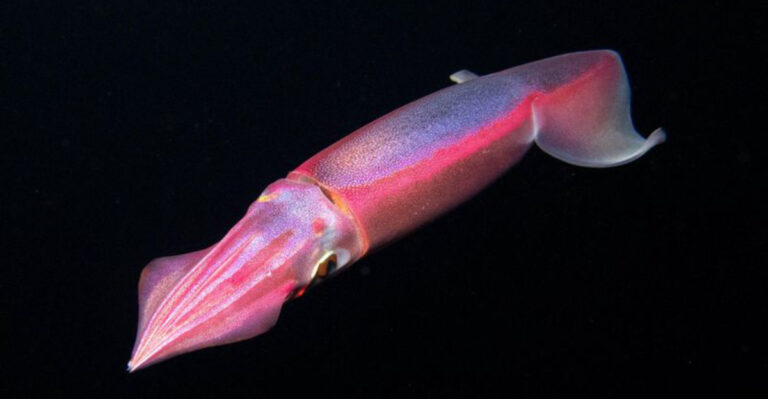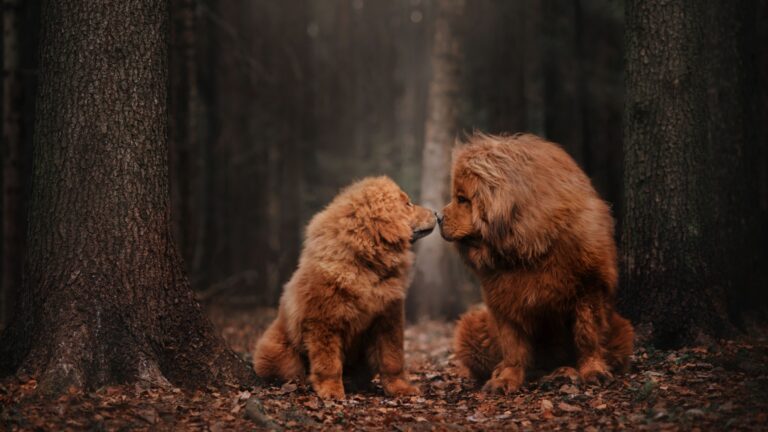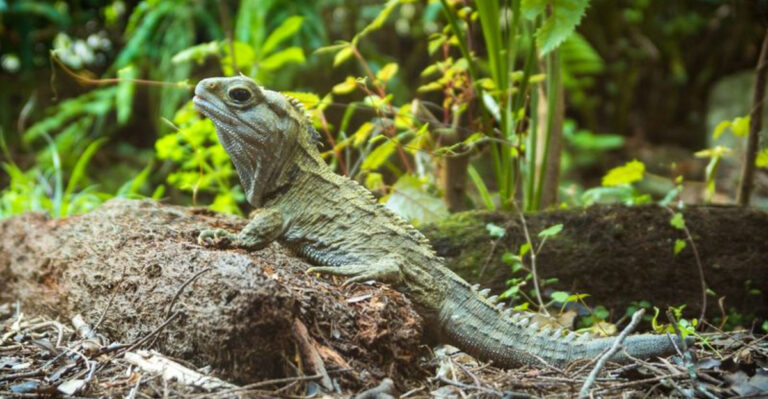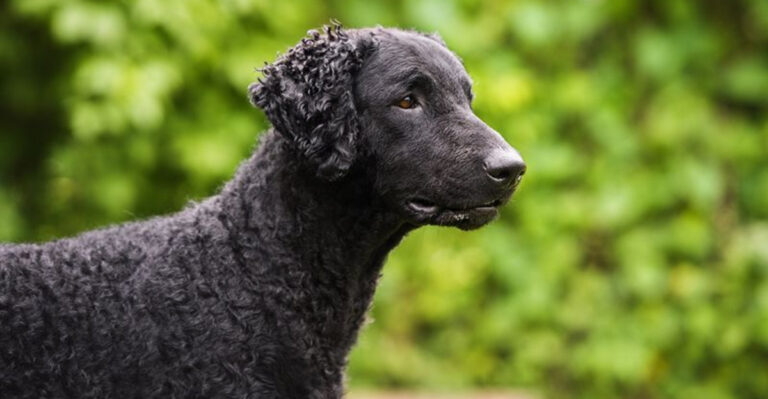18 Fascinating Panda Facts You Probably Didn’t Know
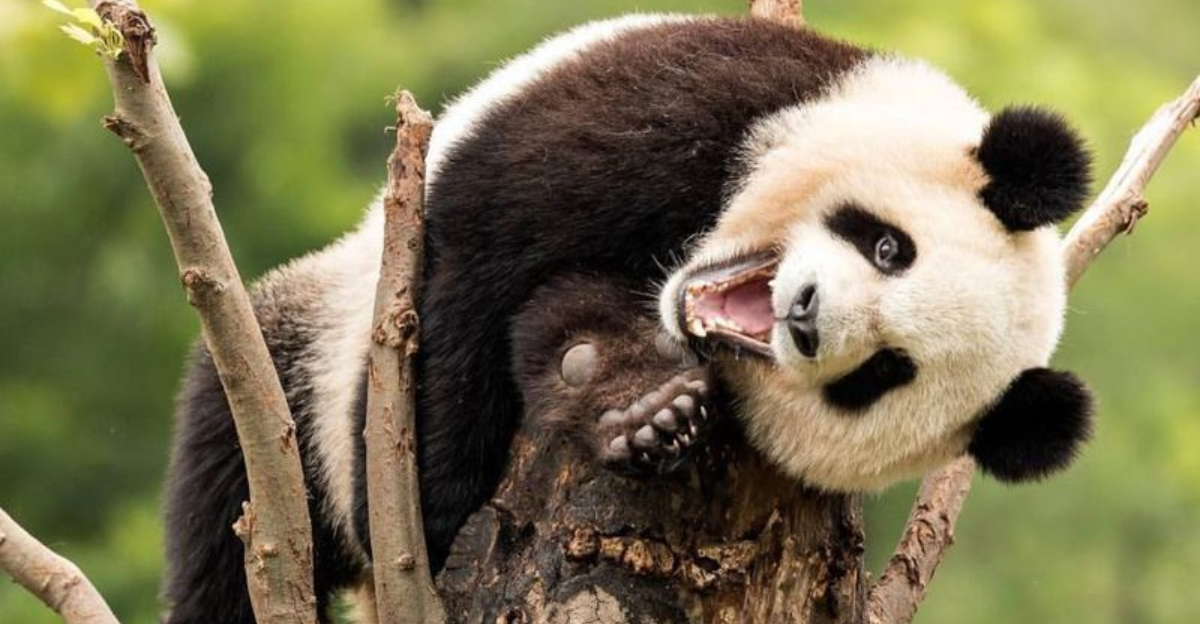
Pandas are more than just adorable furballs—they’re full of surprises! With their black-and-white coats and bamboo obsession, they’ve charmed hearts around the globe.
But behind the cuteness is a world of quirky traits and fascinating behaviors. From their odd “thumbs” to their tree-napping skills, there’s so much to love.
Ready to dive into the wild and wonderful world of pandas?
1. Pandas’ Social Behavior With Cubs
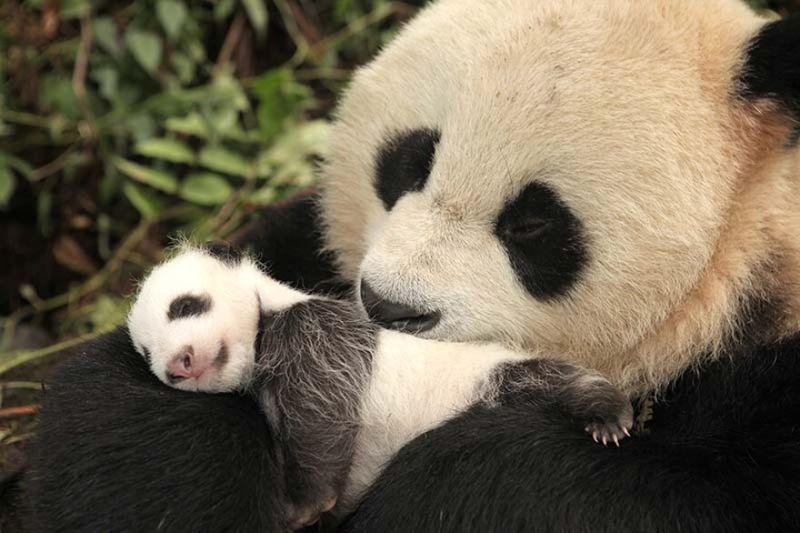
Though pandas are mostly solitary, the bond between a mother and her cub is incredibly strong. For the first few months, mom rarely leaves her baby’s side.
She cradles, grooms, and cuddles her cub constantly, keeping it warm and safe. Soft sounds and gentle touches help build a sweet, silent connection.
As the cub grows, mom encourages little adventures, teaching vital survival skills. This slow shift prepares the cub for life on its own.
2. Pandas’ Special Thumb
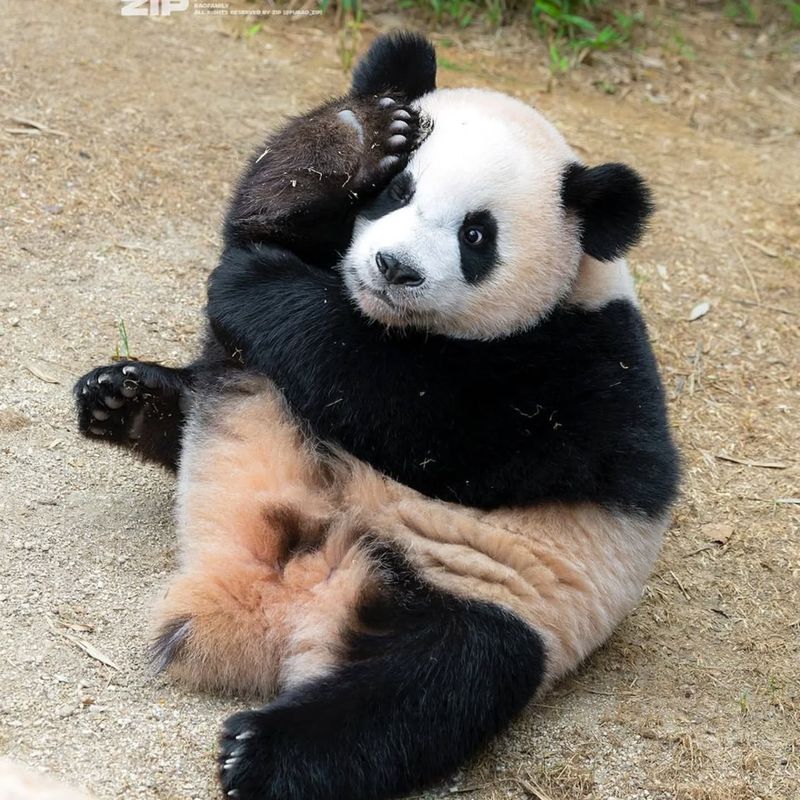
One of the coolest things about pandas? Their “thumb” isn’t a real thumb—it’s a stretched-out wrist bone that acts like one.
This clever feature helps them grip slippery bamboo and munch with serious skill. They can strip leaves and snap stalks like pros.
Since bamboo is tough, that extra grip makes all the difference. It’s like nature gave them built-in chopsticks!
This quirky thumb is proof that pandas are perfectly built for their leafy lifestyle.
3. Pandas’ Birth And Growth
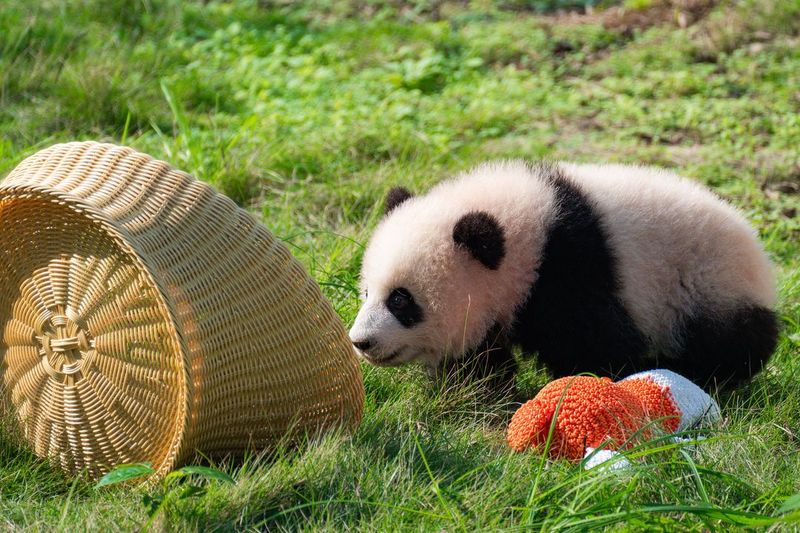
Panda cubs are born teeny-tiny—about the size of a stick of butter! That’s wild, considering their moms are nearly 900 times bigger.
They arrive blind, hairless, and totally dependent on mom for everything. In the wild, one cub is the norm, though twins do happen.
Sadly, mom usually picks one to raise if there are two, choosing the stronger one to survive. It’s nature’s tough love.
In just a few weeks, those tiny pink babies start to grow fur and open their eyes.
4. Pandas’ Playful Nature
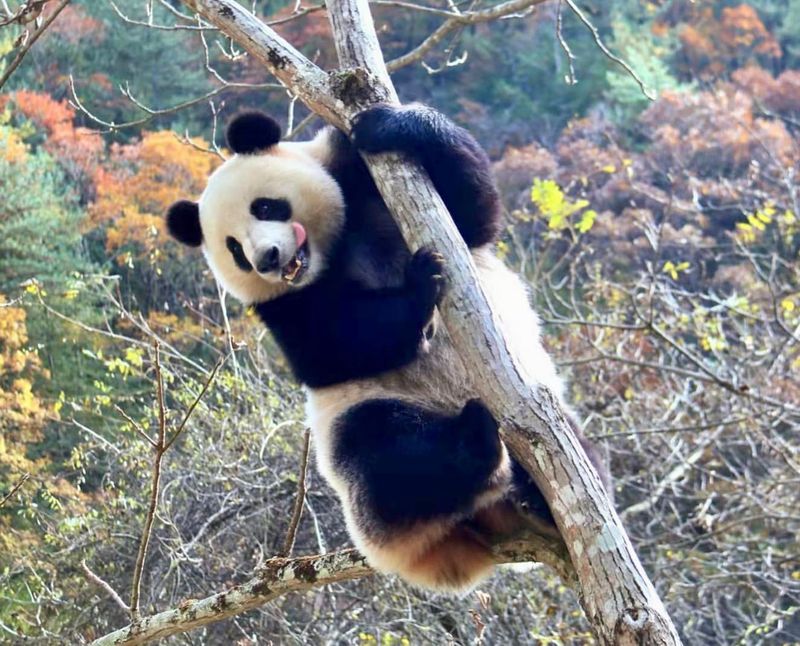
Pandas may be solitary, but they sure know how to have fun—especially in captivity! From somersaults to sliding around, their playful antics never fail to entertain.
Cubs are the real stars, spending hours exploring, climbing, and goofing off. In the wild, this play helps them build strength and learn survival skills.
Play isn’t just cute—it’s crucial for their development and well-being. It also gives us a peek into how they think and interact.
5. Pandas’ Teeth And Diet
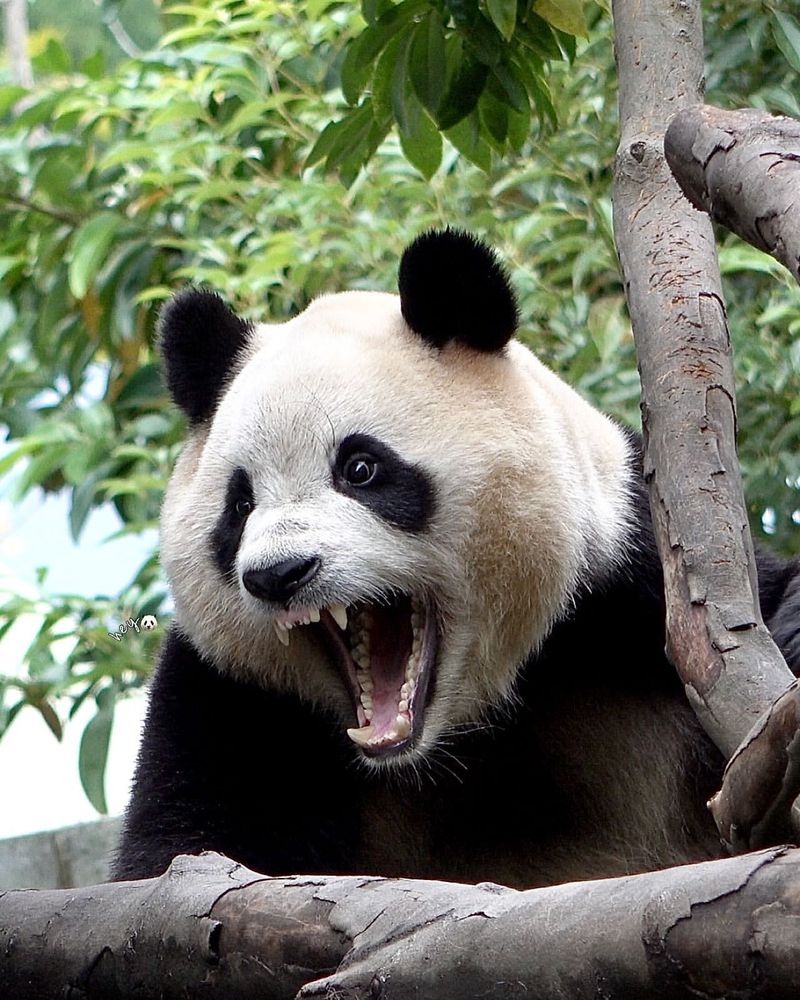
Pandas may be classified as carnivores, but their teeth tell a different story. With big, flat molars and super-strong jaws, they’re built to crush bamboo like pros.
They can chow down on up to 40 pounds of bamboo a day—talk about dedication! All that chewing keeps their teeth in top shape.
Their dental design is a perfect match for their leafy lifestyle. It’s evolution in action, one crunch at a time.
6. Pandas’ Communication
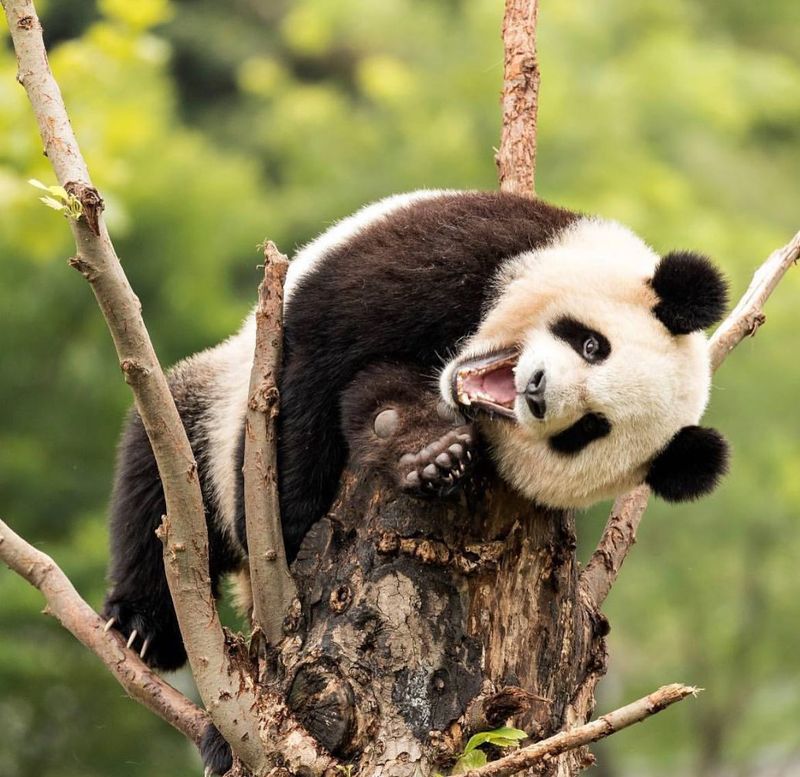
Even though pandas prefer their alone time, they’ve got a whole soundboard of vocal tricks. From bleats and honks to growls, each noise means something special.
They get extra chatty during mating season, using calls that echo through the forest to find each other. It’s long-distance dating, panda-style.
Body language plays a big role too—think playful rolls or standing tall to say, “Back off!” These silent signals speak volumes.
7. Pandas’ Black And White Fur
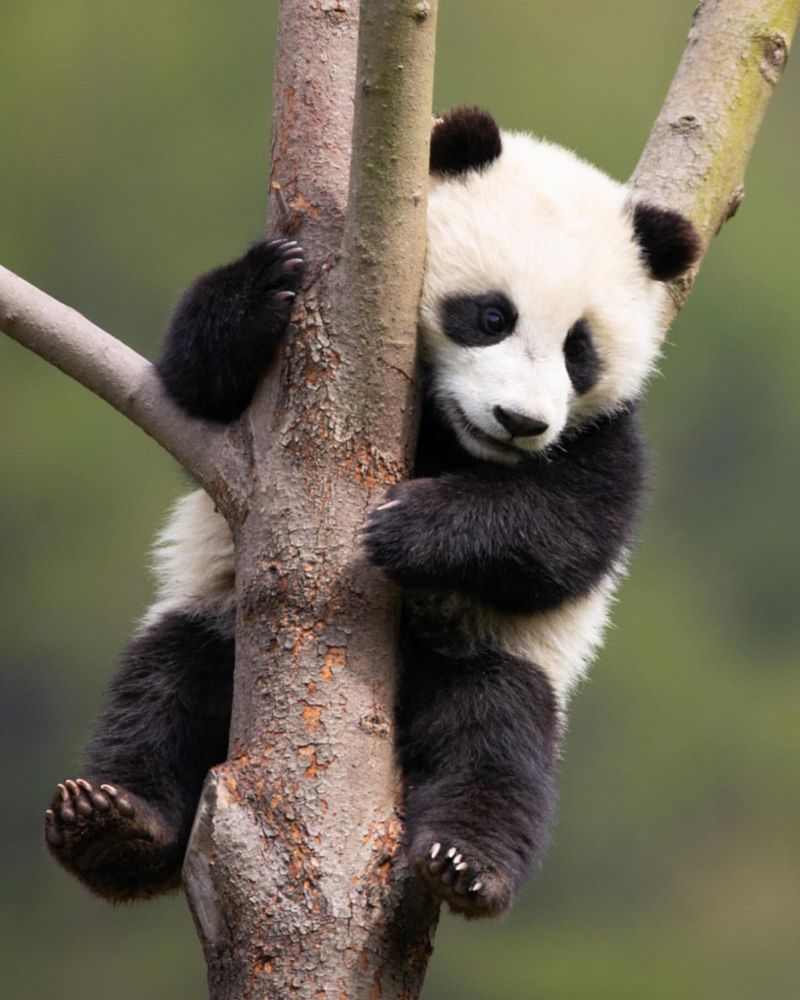
A panda’s black and white fur isn’t just cute—it’s pure survival genius. The white blends with snowy terrain, while the black vanishes into forest shadows.
Those bold eye patches? They’re thought to help pandas recognize each other from afar—kind of like nature’s version of a name tag.
Their thick, woolly coat keeps them cozy in chilly mountain climates. It’s dense enough to handle extreme weather with ease.
8. Pandas’ Role In Ecosystem
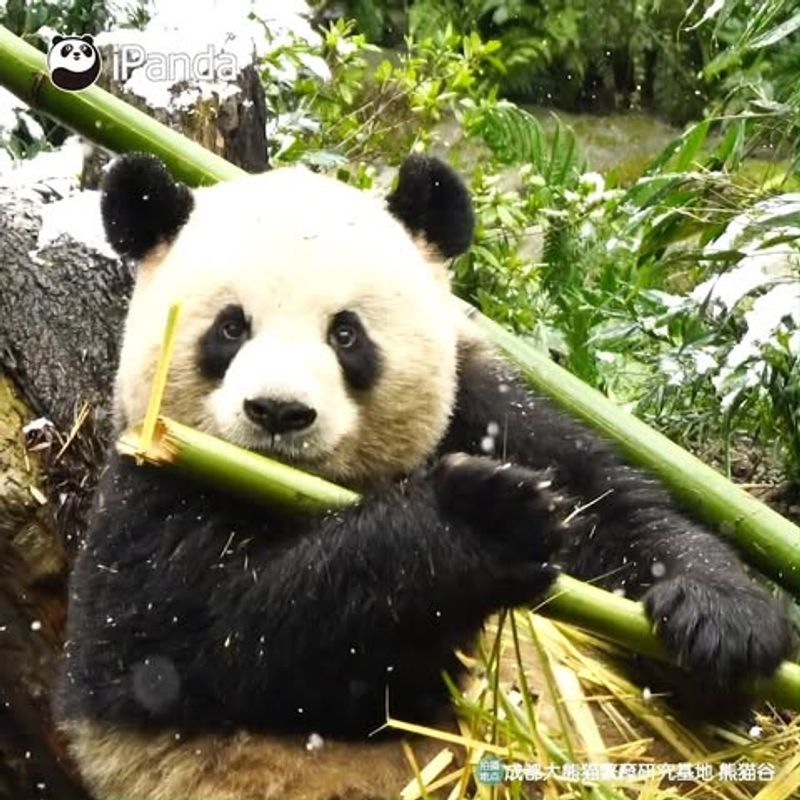
Pandas aren’t just conservation icons—they’re ecosystem MVPs. By munching on bamboo, they help shape and maintain the forest around them.
Their feeding clears space for sunlight, encouraging other plants to grow. That means more food and shelter for a variety of species.
Pandas are considered a keystone species, supporting biodiversity just by being themselves. Their presence keeps entire ecosystems in balance.
Plus, they boost local economies by attracting tourists and funding conservation efforts. Saving pandas means helping their whole forest neighborhood thrive!
9. Pandas’ Limited Habitat
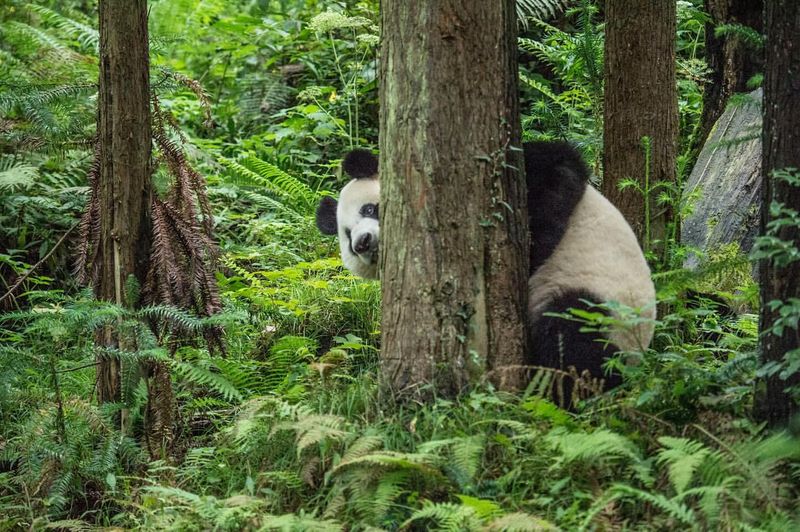
Pandas are native to China, living in the misty mountains of Sichuan, Shaanxi, and Gansu. These cool, bamboo-rich forests are perfect for their picky eating habits.
Sadly, human activity has shrunk their once vast range into small, scattered patches. Finding food and mates in these fragmented habitats isn’t easy.
Conservation efforts now aim to protect forests and connect panda populations with wildlife corridors. It’s all about giving them room to roam.
Saving panda habitats helps tons of other species too. It’s a big win for nature—and a reminder that wild spaces need our care.
10. Pandas’ Reproduction Challenges
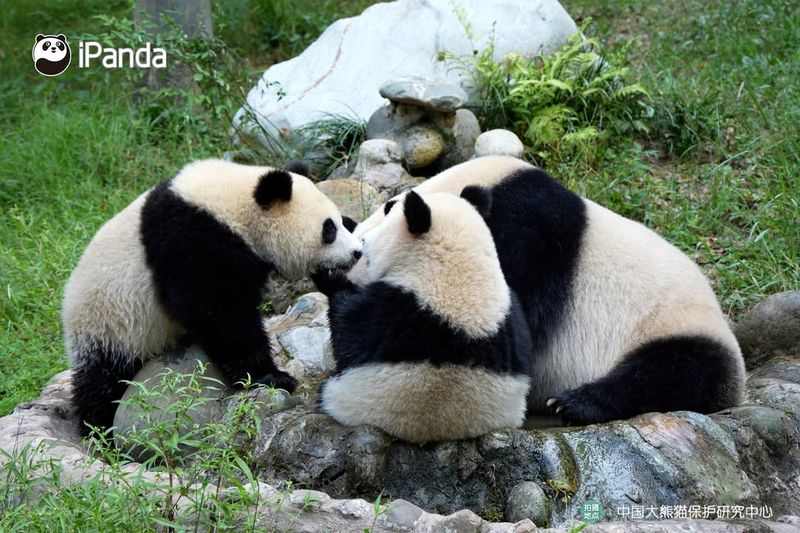
Pandas have a famously tricky time reproducing—females are only fertile for two to three days a year! To make things tougher, they’re super picky about their mates.
Their solo lifestyles mean potential partners rarely cross paths in the wild. Even in zoos, getting them to breed can be a real challenge.
That’s why conservationists often use artificial insemination to help boost the panda population. It’s science lending nature a hand.
11. Pandas As Ambassadors
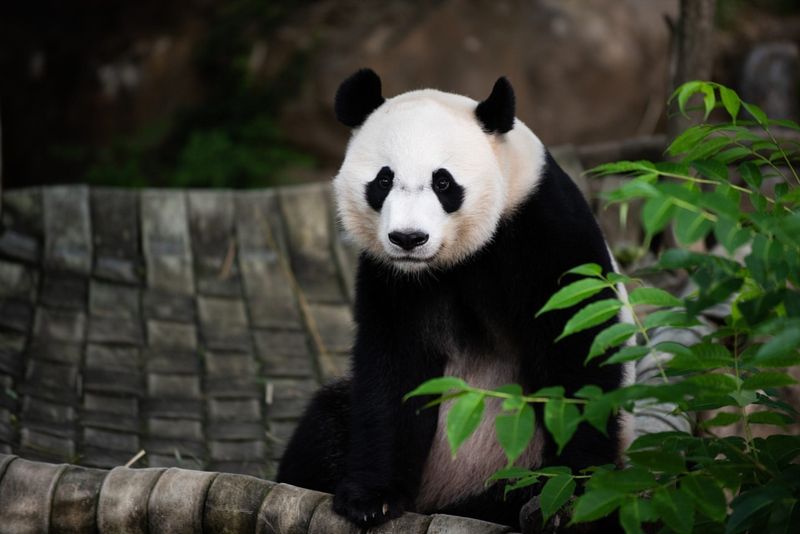
Pandas are more than just adorable—they’re powerful ambassadors for wildlife conservation.
Their charm draws crowds and helps fund critical conservation efforts around the world.
By spotlighting their struggles, pandas raise awareness for many other species facing threats like habitat loss and climate change. They spark curiosity and inspire action.
Pandas also play a role in diplomacy, with China loaning them to zoos as symbols of friendship and global cooperation.
12. Pandas’ Sleeping Habits
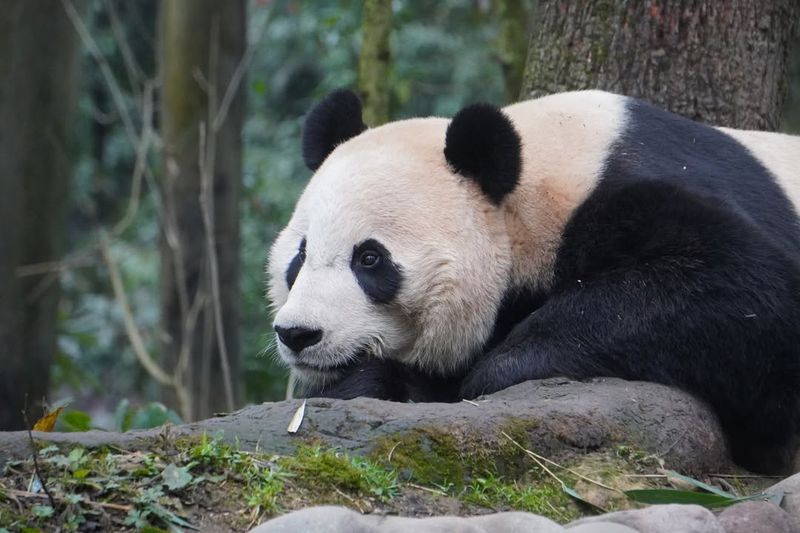
Pandas are the ultimate chill champions, snoozing around 10 hours a day between bamboo feasts.
Their naps usually last two to four hours—and they’re pros at cozying up just about anywhere.
Thanks to their low-energy diet, they need lots of rest to keep going. No fancy beds here – forest floors or tree branches do just fine.
Their laid-back vibe is part of what makes them so lovable. Watching a panda nap is pure peace in motion.
13. Pandas’ Adaptation To Cold
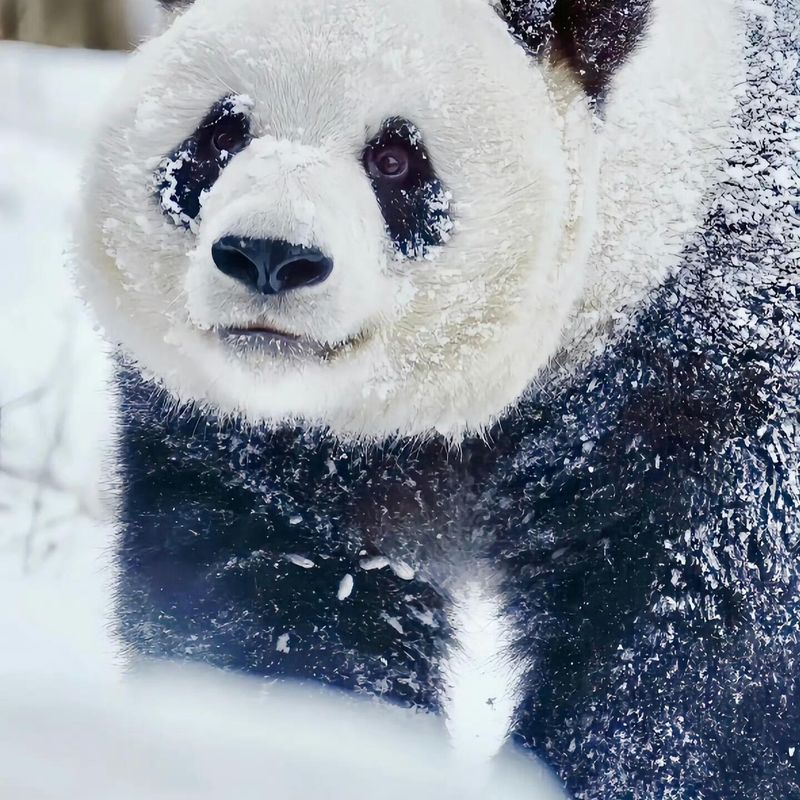
Pandas are cold-weather champs, thanks to their thick, woolly fur that keeps them cozy in chilly mountain forests. It’s the perfect built-in blanket for high-altitude living.
They also have a low metabolic rate, helping them save energy during cold spells. Instead of hibernating, they slow down and focus on snacking and staying warm.
With padded paws for traction, they handle snow like pros. Their ability to thrive in icy terrain shows just how adaptable they really are.
Pandas may look cuddly, but they’re tough cookies when winter rolls in!
14. Pandas’ Bamboo Dependency
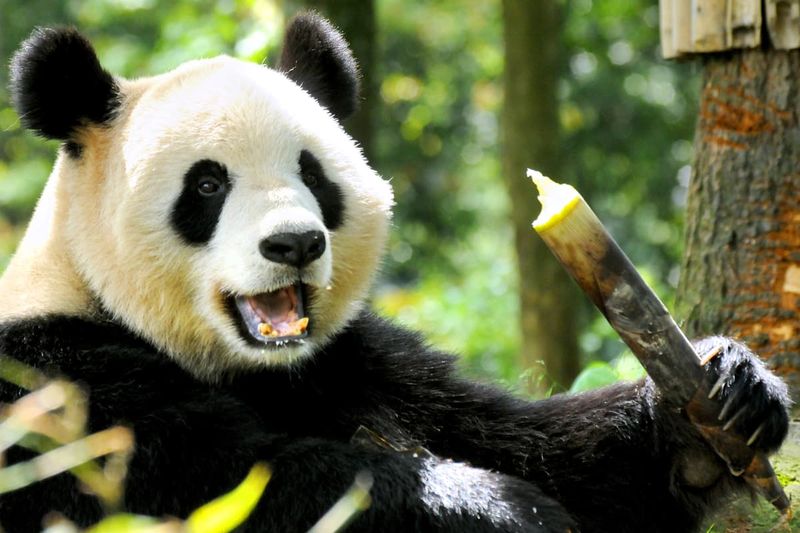
Pandas are bamboo addicts—nearly their entire diet revolves around it! They munch on leaves, stems, and shoots, switching it up with the seasons.
To handle all that chewing, they’ve evolved strong jaws and teeth built for crunching. Even so, their digestion isn’t great, so they eat a ton just to get enough energy.
This bamboo obsession makes them super vulnerable to habitat loss. If the bamboo goes, so do the pandas.
15. Pandas’ Historical Significance
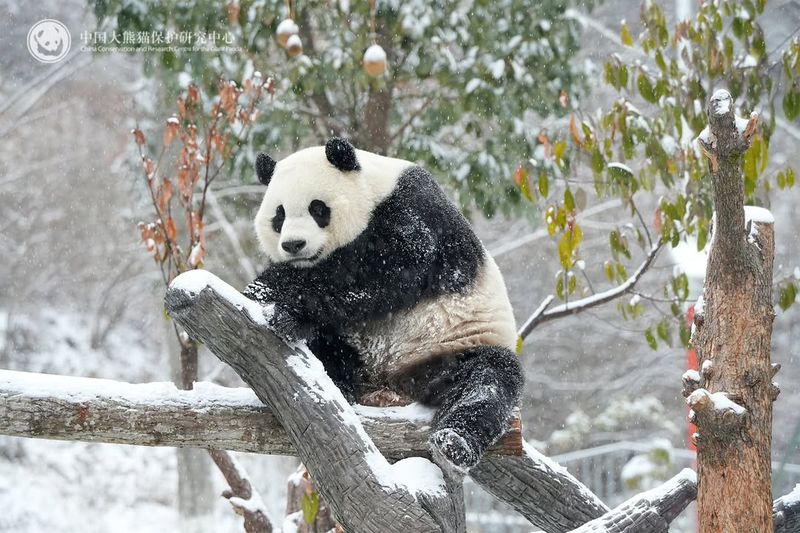
Pandas have been cultural icons in China for centuries, symbolizing peace, harmony, and good fortune.
Ancient art and folklore often feature these gentle giants, treating them as treasured beings.
Their black-and-white look added to their mythical charm, and some even believed pandas had magical powers. Emperors once gifted them to promote peace and goodwill.
Today, they remain national treasures and global symbols of conservation.
16. Pandas’ Unique Diet
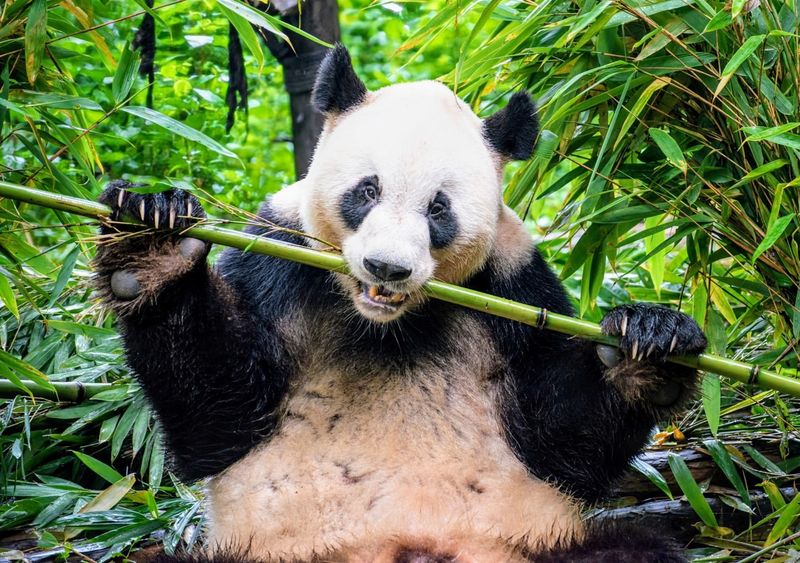
Pandas are bamboo fanatics—almost 99% of their diet is crunchy green goodness! Even though they’re technically carnivores, they’ve gone all-in on the veggie life.
With a digestive system that’s not great at handling plants, they eat up to 16 hours a day. That’s some serious snack time.
Once in a while, they’ll mix it up with a rodent or bird, but bamboo is still their main squeeze.
Their secret weapon? A “pseudo-thumb” that helps them grip stalks like pros.
Chill on the outside, evolution rockstars on the inside—pandas are built for bamboo greatness.
17. Solitary Creatures
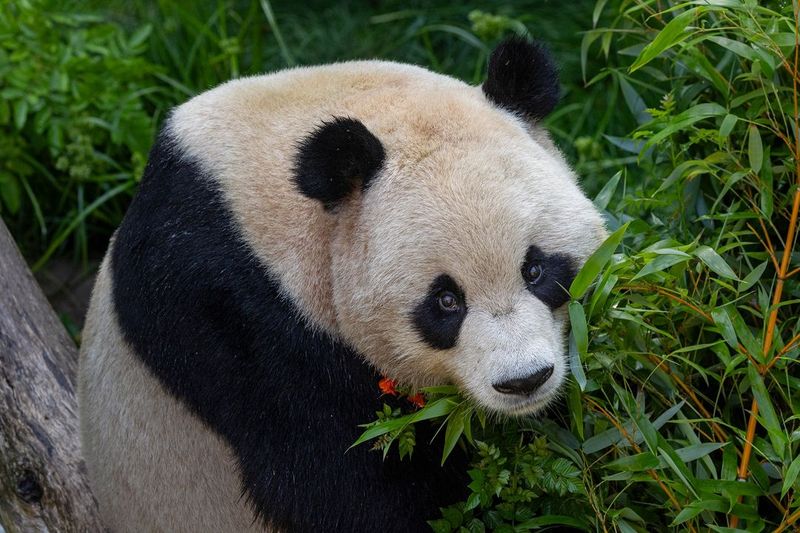
Pandas are nature’s introverts, spending most of their lives alone and loving it. They use scent markings to say, “This is my turf,” and avoid run-ins with others.
Even during mating season, they only meet briefly before going their separate ways. Since bamboo isn’t very nutritious, they need big spaces to eat in peace.
Living solo helps them avoid food fights and keep things chill in the forest.
18. Pandas In Popular Culture
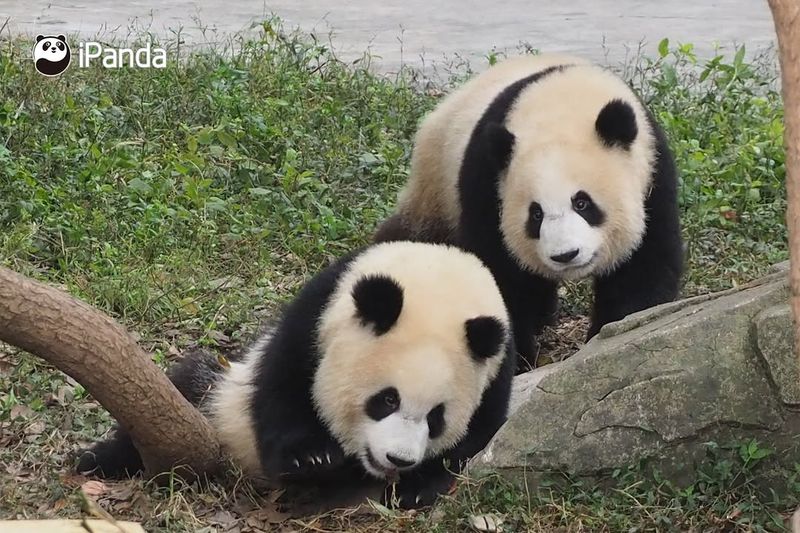
Pandas have become global superstars, winning hearts with their cuteness and calm nature.
From plush toys to cartoons, they’re everywhere—just look at Po from *Kung Fu Panda*!
They’re not just pop culture icons—they’re symbols of conservation, too. The WWF even made the panda its logo to spotlight endangered species.
Pandas pop up in fashion, art, and politics, often as symbols of peace and goodwill. Their charm crosses cultures and brings people together.

